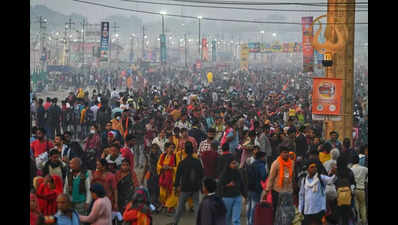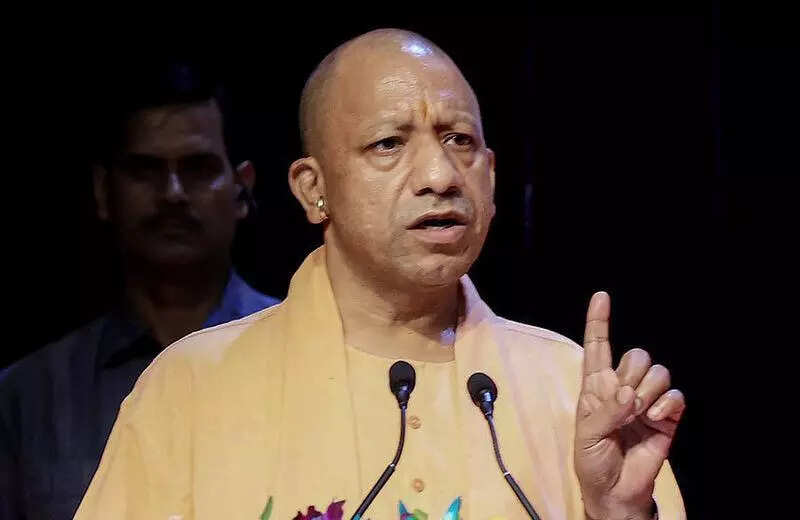Maha Kumbh 2025: The divine catalyst behind India’s rise as the world’s 4th largest economy | Lucknow News

By: Pankaj JaiswalIndia has made a historic leap by overtaking Japan to become the world’s fourth-largest economy, with a GDP of $4.19 trillion, as per the latest figures released by IMF. While this milestone is the result of long-term policy vision and economic reforms, Maha Kumbh 2025 played a decisive, game-changing role delivering the “economic sixer” that clinched India’s fourth-place position.For the past two years, India and Japan were neck and neck in the race for fourth place. But the grand Maha Kumbh held in Prayagraj injected massive momentum into India’s economy. The event led to an estimated Rs 4 lakh crore in direct and indirect spending, boosting consumption across multiple sectors including retail, transport, hospitality, healthcare, digital services, MSMEs, and FMCG. This surge in demand energized the economy much like a wartime production boom transforms a nation’s industrial output. Consequently, India’s GDP for FY 2024–25 exceeded expectations by nearly 1%. Without Maha Kumbh 2025, India may have narrowly missed this milestone. I had already said at the start of the Kumbh that it would revise India’s GDP forecast by 1% and that’s exactly what happened.”Maha Kumbh- A Demand-Driven Economic InjectionMaha Kumbh didn’t just offer spiritual upliftment it acted as an economic stimulus of unparalleled magnitude. The influx of millions of pilgrims led to a direct surge in travel, accommodation, food, shopping, medical care, and digital transactions. It wasn’t just a temporary bump, the infrastructure created in the run-up to the event, such as roads, bridges, digital connectivity, Ganga rejuvenation, and Smart City projects, continue to benefit the region and the country at large.This was not a coincidence, but a result of visionary governance. Under the leadership of UP CM Yogi Adityanath, the Maha Kumbh became a powerful demonstration of how faith and economic growth can walk hand-in-hand. The global audience witnessed Sanatan Economics in action a model where spirituality and sustainability drive structural development. Maha Kumbh is a prime example of India’s festival-driven, demand-led economic framework that maintains constant economic dynamism.The Three Pillars of India’s Rise as a Forth EconomyIn addition to this Maha Kumbh, India’s ascent to the fourth spot stands on three core pillars:1. Strong Policy and LeadershipUnder PM Narendra Modi, India’s policy framework Make in India, Digital India, UPI, GST, PM GatiShakti, Bharatmala, Sagarmala, UDAN has re-energized productivity, reduced imports, boosted domestic manufacturing, and modernized supply chains. Infrastructure push played a pivotal role just like a skeleton and arteries are essential for the human body, physical infrastructure and logistics are vital to an economy. Nitin Gadkari has played vital role in India’s infrastructure landscape, bringing in equitable distribution of opportunities and investments.2. India’s Youthful and Festive PopulationIndia’s population is not a burden but an asset, unlike many African nations or even China now facing demographic challenges. This demographic dividend has become the engine of production, consumption, and innovation. With schemes like Ayushman Bharat, Skill India, and PM Vishwakarma, the youth is becoming increasingly empowered. India’s festive culture acts as a perpetual economic catalyst, where events like festivals, marriages, and pilgrimages create sustained demand and protect the economy from global slowdowns.3. India’s Unmatched Growth RateIndia’s growth rate surpasses that of its economic competitors. As per IMF data, the closest rival, China, lags with a 4% growth rate. Germany, the third-largest economy, has near-stagnant growth. The U.S. stands at 1.8%, Japan at 0.6%, and the UK at 1.1%. In contrast, India’s growth, powered by infrastructure, demographics, and festive demand, is robust and dynamic. When this is paired with Sanatan Economics and national culture, India’s rise becomes inevitable.The Road to the Top 3India’s next goal is to break into the global top 3. Only three countries now stand ahead, Germany, China, and the US. Surpassing Germany is achievable, given their smaller population, lower growth, and limited consumption base. However, overtaking China and the US will require two bold strategic shifts.First, A National Movement for Swadeshi (Indigenous Products)Due to WTO rules, the government cannot directly push for Swadeshi, but citizens can voluntarily shift to Indian products over Chinese or American ones. This consumer revolution can substantially lift the domestic economy.Second, Focus on Innovation and PatentsIndia must transform its businesses into innovation-led, IP-rich enterprises. Global premium pricing and economic superiority will come only when India builds a knowledge economy and this is the only path to match or surpass the U.S.The final conclusion is that the Sanatan Economics is India’s Silent Strength. It is not just a matter of faith, it has economic force too. If India integrates its festival-driven economy into national planning and scales it up strategically, then the dream of becoming a developed nation is not far off.(Writer is an economist and chartered accountant)





